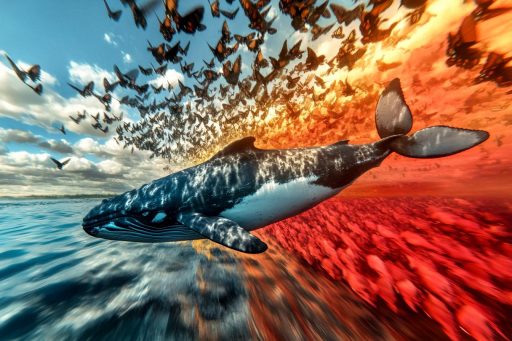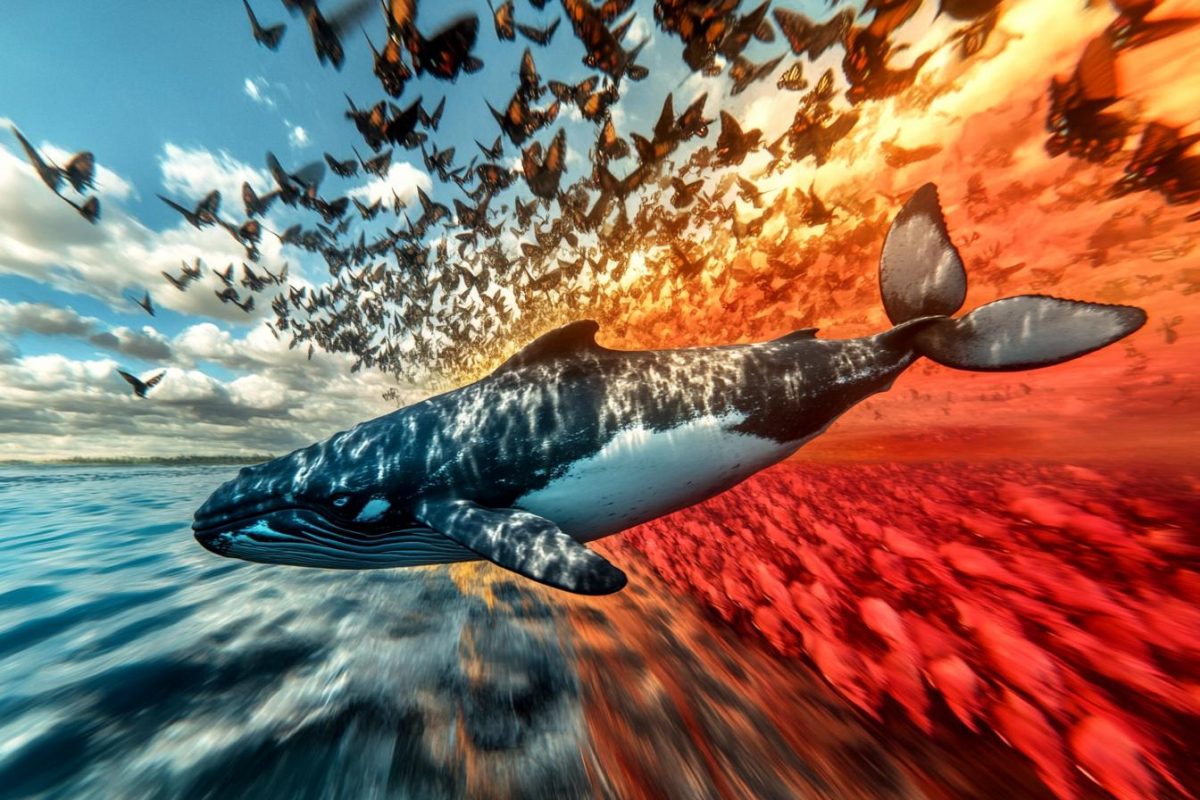
Every year, animals take to the skies, seas, and land in coordinated movements that defy human understanding. Some travel thousands of miles without maps, others return to precise locations they’ve never seen before. Despite scientific advances, many of these migrations remain wrapped in mystery. What drives these creatures to journey so far, with such precision—and how do they know where to go?
The Monarch Butterfly’s Cross-Generational Trek

Monarch butterflies migrate thousands of miles from Canada to Mexico, even though no single butterfly makes the full round trip. Each generation picks up where the last left off, somehow following a path it has never traveled. How they navigate so precisely across generations remains one of nature’s most confounding mysteries. Scientists still don’t understand how they pass on such accurate directions without memory.
Arctic Terns and the Endless Summer

Arctic terns fly from pole to pole, chasing summer across the globe in a round-trip migration of nearly 50,000 miles. These birds return to the same nesting sites year after year, despite crossing entire oceans. How they detect and follow such an epic route with pinpoint accuracy is still unknown. Their journey is the longest known animal migration—and the least understood.
The Green Sea Turtle’s Unerring Return

Green sea turtles migrate across entire oceans, only to return to the exact beach where they were born to lay eggs. How they navigate back after decades at sea remains a biological enigma. Some suspect they use the Earth’s magnetic field, but no one can explain how they store or recall that information. Their homecoming is a marvel of instinct and mystery.
The Wandering Eel Enigma

European and American eels are born in the Sargasso Sea, migrate to rivers thousands of miles away, and then return to the same sea to spawn and die. No one has ever witnessed their spawning in the wild. How they know when and where to return is a puzzle that has eluded scientists for centuries. Their lifecycle is like a myth happening in real time.
The Caribou’s Route Through the Unknown

Caribou herds in the Arctic migrate over vast, featureless tundra landscapes with no obvious landmarks. Yet they manage to follow nearly the same path every year. Researchers are still unsure how they orient themselves across such monotonous terrain. Some believe they may even be sensing things beyond human perception.
Mystery of the Missing Whales

Gray whales have been tracked along the Pacific Coast, but some individuals vanish from the known migration routes for years. When they reappear, they often seem healthy and strong. Where they go—and how they survive in uncharted waters—remains a baffling question. Their detours challenge everything scientists thought they knew about marine migrations.
Dragonflies That Cross Oceans

Some species of dragonfly migrate across continents and even oceans, covering thousands of miles. One species, the globe skimmer, makes a journey from India to East Africa, possibly completing the longest insect migration known. With tiny bodies and fragile wings, how they survive such a journey is still being studied. Their flight paths remain largely undocumented and filled with unknowns.
The Shadow Routes of Sharks

Great white sharks have been recorded making mysterious, deep-water migrations to a remote region scientists call the “White Shark Café.” Despite years of tracking, no one knows why they go there or what they do in the depths. The location holds no obvious food or breeding grounds. It’s like a secret rendezvous point that only they understand.
Storks and the Split Path Mystery

White storks from Europe take different routes to Africa—some fly east, some west—with no clear reason why. Even storks from the same region split up. This inexplicable variation has baffled ornithologists and challenged GPS tracking studies. It’s as if storks are following invisible roads only they can sense.
Salmon’s Magnetic Compass

Salmon famously return to the very streams where they were born, swimming upstream against incredible odds. While scientists suspect they use magnetic fields and chemical cues, the exact mechanism is still unclear. How they navigate so precisely, even after years in the ocean, is something researchers are still unraveling. Their internal compass is nothing short of miraculous.
The Zebra’s New Highway

Zebras in Botswana were found to be using a newly discovered migration route that spans nearly 300 miles—the longest for any African land animal. No one knows why this route reappeared or how the zebras knew to follow it. It’s a migration that was unknown until recently, hidden in plain sight. The herd’s instinctive knowledge seems to transcend explanation.
Elephants and the Path of Memory

Elephants migrate over long distances across Africa, often to water holes they haven’t visited in decades. Elders seem to guide the herds, but even young elephants can find hidden oases. How this knowledge is passed down—or how it’s remembered at all—is a lingering mystery. Their migratory intelligence rivals human memory in complexity.
Humpback Whales and the Songline Navigation

Humpback whales sing long, complex songs that travel for miles underwater. Some believe these songs may actually help guide their long migrations. But how a song becomes a map is still speculative. The idea that whales navigate through sound adds a layer of eerie beauty to their mysterious journeys.
The Locust Plague Path

Swarms of locusts appear to follow unpredictable migration paths, often forming suddenly and devastatingly. Their movement patterns are chaotic yet somehow synchronized. Why they choose certain directions—and how the swarm “decides” as a group—remains poorly understood. It’s like a biological hive mind steering an airborne plague.
The Cuckoo’s Solo Odyssey

Cuckoos are brood parasites, laying eggs in other birds’ nests and abandoning their young. Yet when the young cuckoos mature, they somehow migrate thousands of miles to Africa alone, with no guidance. How they find their way to a destination they’ve never seen is a complete mystery. It’s one of the strangest and most solitary migrations in the animal kingdom.
Whispers on the Wind

Across skies, oceans, deserts, and forests, animals continue to follow mysterious paths that science has yet to decode. These migrations are stories written into the earth and sky—ancient, instinctual, and still largely unexplained. While technology has revealed patterns, it has not revealed purpose. The map may be visible, but the meaning is still hidden.





